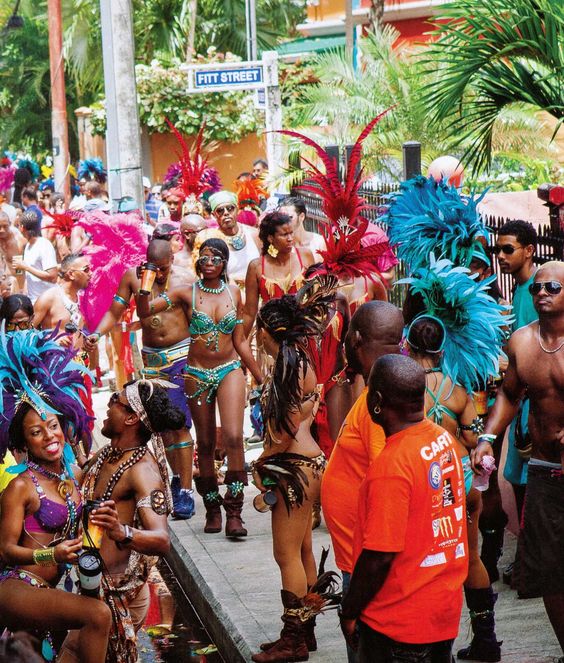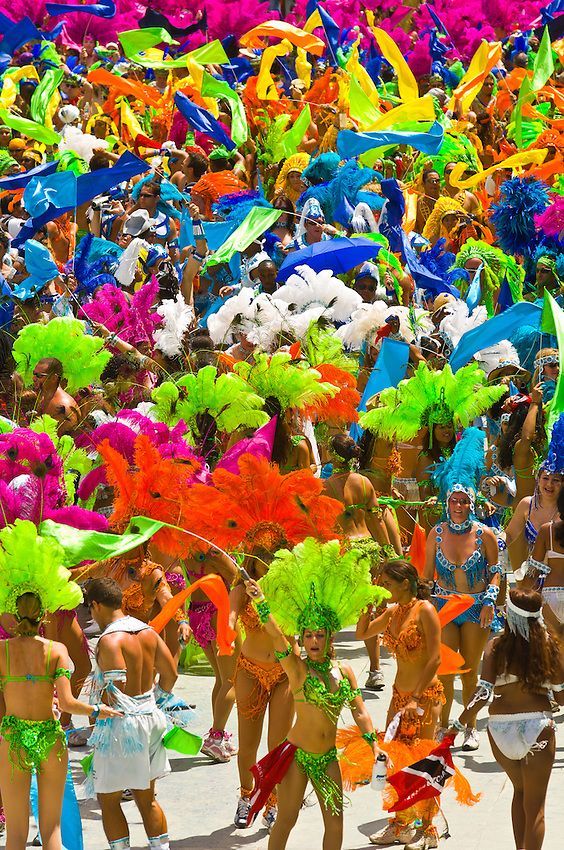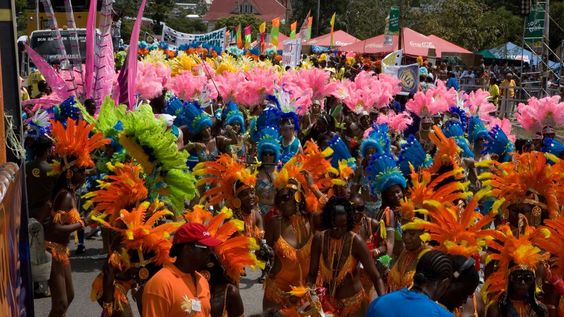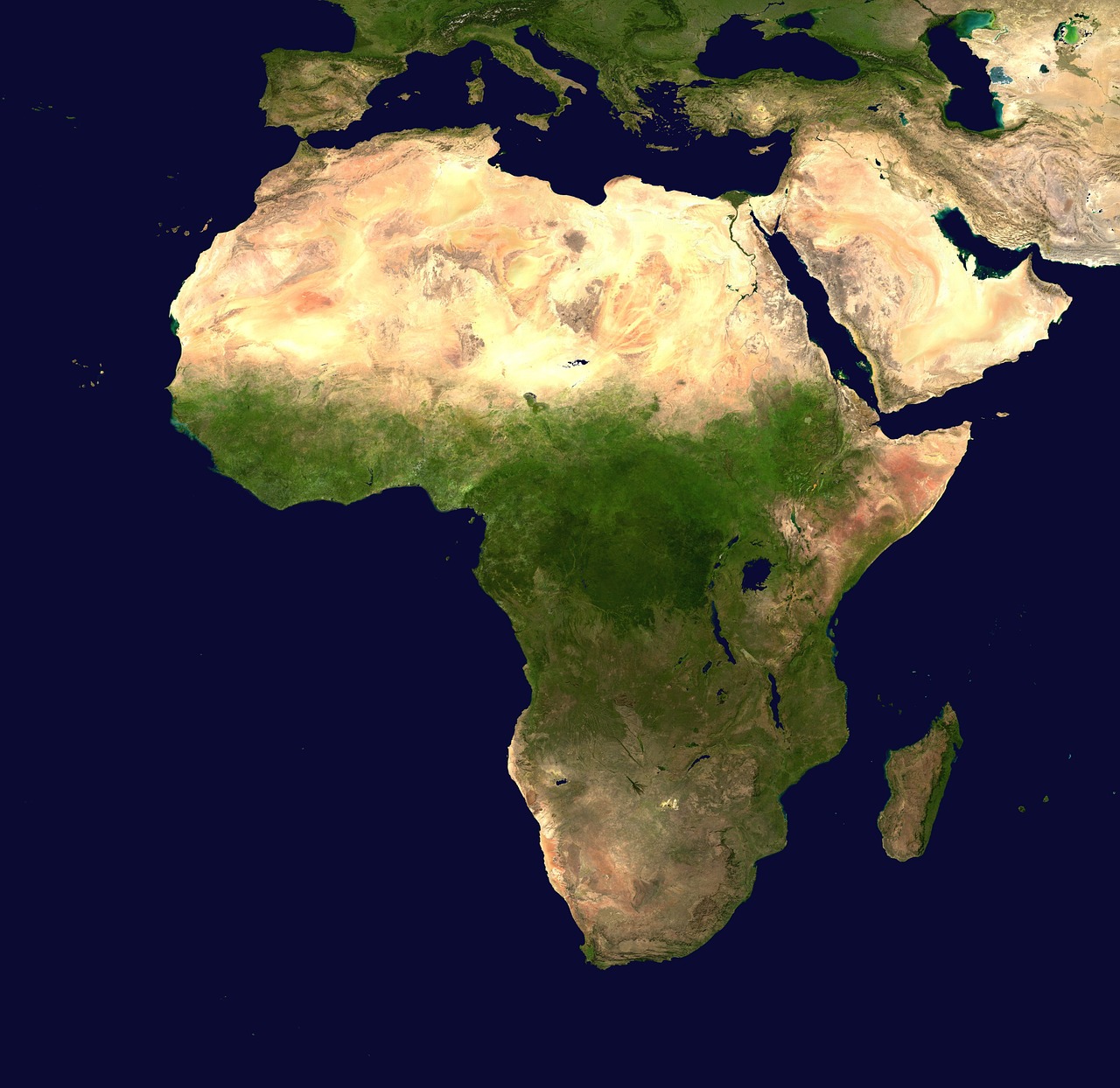10 Facts About Trinidad and Tobago Carnival: Everything You Need to Know
The Trinidad and Tobago Carnival is one of the most popular and vibrant festivals in the Caribbean. This annual event is a two-day celebration that takes place on Monday and Tuesday, before Ash Wednesday. I will be sharing a few facts about Trinidad and Tobago Carnival in this post.
The Carnival is a time for revelry, music, and dance, as well as a reflection of the country’s rich cultural heritage.
10 Facts About Trinidad and Tobago Carnival
Here are 10 facts about the Trinidad and Tobago Carnival that you might not know. Firstly, the Carnival dates back to the 18th century and has its roots in the French colonial period.
The festival was originally a time for slaves to celebrate and express themselves before the start of Lent. Secondly, the Carnival is a fusion of different cultural influences, including African, French, Spanish, and Indian. This unique blend of cultures is reflected in the music, costumes, and traditions of the Carnival.
Thirdly, the Trinidad and Tobago Carnival is famous for its elaborate and colorful costumes, which are designed and created by local artisans. The costumes are often inspired by historical events, mythology, and popular culture.
Each year, there is a competition for the best costume, and the winners are awarded prizes and recognition. These are just a few of the fascinating facts that make the Trinidad and Tobago Carnival a must-see event for anyone interested in Caribbean culture and history.
1. Origins and History
Trinidad and Tobago Carnival is a vibrant and colorful festival that has become one of the most popular events in the Caribbean. The festival has a rich history that dates back to the pre-colonial era, and it has evolved over the years to become the spectacle that it is today.
Pre-Colonial Influences
The origins of Trinidad and Tobago Carnival can be traced back to the pre-colonial era when the indigenous Amerindian people celebrated their annual harvest festival. This festival was a time of feasting, dancing, and music, which are all integral parts of the modern-day Carnival.
Emancipation Roots
After the abolition of slavery in 1834, the newly freed slaves in Trinidad and Tobago began to celebrate their emancipation with music, dance, and costume. This celebration eventually merged with the pre-colonial festival to form the Carnival we know today.
Evolution Through Decades
Over the decades, Trinidad and Tobago Carnival has evolved into a massive event that attracts people from all over the world. The festival has become a showcase for the country’s rich cultural heritage, and it is now a major contributor to the country’s economy.
In recent years, the festival has also become a platform for social and political commentary, with many participants using their costumes and performances to highlight issues such as gender equality, environmentalism, and social justice.
Overall, Trinidad and Tobago Carnival is a celebration of the country’s unique cultural heritage and a testament to the resilience and creativity of its people.
2. Cultural Significance

Trinidad and Tobago Carnival is more than just a celebration of music, dance, and colorful costumes. It has deep cultural significance for the people of Trinidad and Tobago, and has become an important part of their national identity.
National Identity
The Carnival is a celebration of the country’s diverse cultural heritage, which includes African, Indian, European, and indigenous influences. It is a time for Trinidadians and Tobagonians to come together and celebrate their shared identity as citizens of a multicultural nation.
Cultural Preservation
The Carnival is also an important way of preserving Trinidad and Tobago’s cultural traditions. Many of the Carnival’s rituals and performances have been passed down from generation to generation, and are a way of keeping the country’s cultural heritage alive.
Global Impact
The Carnival has become a global phenomenon, attracting visitors from all over the world. It has helped to put Trinidad and Tobago on the map as a cultural destination, and has contributed significantly to the country’s economy.
Overall, the cultural significance of Trinidad and Tobago Carnival cannot be overstated. It is a celebration of the country’s rich cultural heritage, a way of preserving its traditions, and a global showcase of its unique identity.
3. Main Events
Trinidad and Tobago Carnival is known for its vibrant and energetic celebrations, and the main events of the festival are no exception. Here are some of the main events that take place during the carnival:
Calypso and Soca Competitions
Calypso and Soca are two of the most important musical genres in Trinidad and Tobago, and during the carnival, several competitions take place to showcase the best in these genres.
The Calypso Monarch competition is one of the most popular events, where performers compete to be crowned the best Calypsonian of the year. The Soca Monarch competition is also a major event, where performers compete to be the best Soca artist of the year.
Steelpan Performances
Steelpan music is a unique genre that originated in Trinidad and Tobago, and it is an integral part of the carnival celebrations.
During the carnival, there are several steelpan competitions and performances that take place, showcasing the best steelpan players on the island. The National Panorama competition is one of the most popular events, where steelpan orchestras compete to be crowned the best in the country.
Masquerade Bands
Masquerade bands are a key part of the carnival celebrations, and they are known for their extravagant costumes and lively performances. During the carnival, there are several masquerade band competitions and performances that take place, showcasing the best bands on the island.
The Parade of Bands is one of the most popular events, where masquerade bands parade through the streets of Port of Spain, showcasing their elaborate costumes and dance moves.
Overall, the main events of Trinidad and Tobago Carnival are a must-see for anyone visiting the island during the festival season. From the Calypso and Soca competitions to the steelpan performances and masquerade bands, there is something for everyone to enjoy during this vibrant and energetic celebration.
4. Traditions and Customs
Costume Design
One of the most prominent traditions of the Trinidad and Tobago Carnival is the elaborate costumes worn by participants. These costumes are designed to reflect the vibrant and colorful culture of the islands. The costumes are often made of feathers, beads, and sequins, and are designed to be eye-catching and unique.
Many of the costumes are designed to represent different themes, such as nature, history, or mythology. Some of the most popular costumes include the “King and Queen of the Bands” costumes, which are designed to be the most elaborate and ornate costumes in the parade.
Dance and Music Styles
Dance and music are an integral part of the Trinidad and Tobago Carnival. The music is typically a combination of African rhythms, calypso, soca, and steelpan music. The dance styles are also diverse, with participants often incorporating elements of African, Indian, and European dance styles.
One of the most popular dance styles is the “wining” dance, which involves gyrating the hips in a circular motion. The music and dance are often accompanied by colorful costumes and elaborate floats.
Culinary Traditions
Food is an important part of the Trinidad and Tobago Carnival. One of the most popular dishes is “doubles,” which is a type of street food made with fried dough, chickpeas, and a variety of sauces.
Other popular dishes include “roti” (a type of flatbread filled with curried meat or vegetables), “callaloo” (a soup made with leafy greens and coconut milk), and “bake and shark” (a sandwich made with fried shark meat). These dishes reflect the diverse cultural influences on the islands, including African, Indian, and European cuisine.
5. Economic Impact
Trinidad and Tobago Carnival is not just a cultural celebration, but also a major contributor to the country’s economy. The festival generates significant revenue and provides employment opportunities for many locals.
Tourism Boost
Trinidad and Tobago Carnival attracts thousands of tourists from around the world. According to the Trinidad and Tobago Tourism Development Company, the festival generates approximately $100 million in revenue each year. This influx of visitors helps to boost the local economy by creating demand for hotels, restaurants, transportation, and other tourist-related services.
Local Business Engagement
Trinidad and Tobago Carnival provides an opportunity for local businesses to engage with the festival-goers.
Many businesses, such as street vendors, souvenir shops, and food stalls, set up shop during the festival to cater to the needs of the visitors. This not only helps to generate revenue for the businesses but also provides a unique cultural experience for the tourists.
Employment Opportunities
Trinidad and Tobago Carnival provides employment opportunities for many locals. The festival requires a significant amount of manpower to organize and execute, which creates jobs in various sectors such as event planning, security, transportation, and hospitality. Additionally, the festival provides a platform for local artists, musicians, and performers to showcase their talents and earn a living.
Overall, Trinidad and Tobago Carnival has a significant economic impact on the country, providing a boost to the tourism industry, engaging local businesses, and creating employment opportunities for many locals.
ALSO READ: 33 Fun Facts About Trinidad and Tobago: Discover the Culture and History of These Caribbean Islands
6. Notable Figures
Trinidad and Tobago Carnival has produced many notable figures over the years. These individuals have made significant contributions to the development and growth of the festival. In this section, we will highlight some of the most legendary calypsonians, influential designers, and prominent steelpan musicians.
Legendary Calypsonians
Calypso music is an integral part of Trinidad and Tobago Carnival. It is a form of music that originated in Trinidad and Tobago and has become an essential part of the festival. Some of the most legendary calypsonians include:
- Lord Kitchener
- Mighty Sparrow
- Lord Invader
- Lord Pretender
- Black Stalin
These calypsonians have won numerous awards and accolades for their contributions to the genre. They have also played a significant role in shaping the cultural landscape of Trinidad and Tobago.
Influential Designers
Trinidad and Tobago Carnival is known for its elaborate and colorful costumes. The designers behind these costumes are some of the most influential individuals in the festival. Some of the most prominent designers include:
- Peter Minshall
- Brian MacFarlane
- Wayne Berkeley
- Pat Chu Foon
- Heather Jones
These designers have won multiple awards and have been recognized for their creativity and innovation in costume design.
Prominent Steelpan Musicians
Steelpan music is another integral part of Trinidad and Tobago Carnival. It is a form of music that originated in Trinidad and Tobago and is played on instruments made from oil drums. Some of the most prominent steelpan musicians include:
- Ray Holman
- Len “Boogsie” Sharpe
- Robert Greenidge
- Andy Narell
- Liam Teague
These musicians have won numerous awards and have been recognized for their exceptional talent and contributions to the steelpan genre. They have played a significant role in promoting and preserving the cultural heritage of Trinidad and Tobago.
7. Carnival Arts
Visual Art Displays
The Trinidad and Tobago Carnival is not just about the costumes and music. It is also a showcase of the visual arts. The streets of Port of Spain are filled with vibrant and colorful murals, sculptures, and installations that showcase the creativity and talent of local artists. Many of these artworks are inspired by the themes and traditions of the Carnival, and they add to the festive atmosphere of the event.
Craftsmanship and Workshops
The Carnival also provides an opportunity for local craftsmen to showcase their skills. From costume designers to jewelry makers, many artists create unique and beautiful pieces for the Carnival. Visitors can also participate in workshops where they can learn about the different crafts and techniques used in the making of Carnival costumes and accessories.
Overall, the Carnival Arts section of Trinidad and Tobago Carnival is a celebration of creativity and talent. It showcases the rich cultural heritage of the country and provides a platform for local artists to display their work. Whether you are a lover of visual arts or a fan of the Carnival, this section is worth exploring.
8. Safety and Regulations
Security Measures
Trinidad and Tobago Carnival is a festive and exciting event, but safety is always a top priority. The event organizers work closely with law enforcement agencies to ensure that the carnival is a safe and secure event for everyone. There are several security measures in place to ensure the safety of all participants and spectators.
One of the main security measures is the presence of police officers throughout the carnival. Officers are stationed at various points along the parade route and in the surrounding areas to ensure that everyone is safe. There are also security cameras in place to monitor the crowds and identify any potential threats.
Health and Safety Protocols
In addition to security measures, there are also health and safety protocols in place to ensure that participants and spectators stay safe and healthy during the carnival. One of the most important health and safety protocols is the provision of medical services.
There are medical stations located throughout the carnival route, staffed by trained medical personnel who are equipped to handle a wide range of medical emergencies. These medical personnel are also trained to identify and treat any potential cases of heat stroke or dehydration, which can be a common problem during the carnival.
Another important health and safety protocol is the provision of clean and safe drinking water. There are water stations located throughout the carnival route where participants and spectators can refill their water bottles. This helps to ensure that everyone stays hydrated and healthy throughout the event.
Overall, Trinidad and Tobago Carnival is a safe and enjoyable event for everyone. The security measures and health and safety protocols in place help to ensure that everyone can enjoy the festivities without any worries.
9. Future of the Carnival
The Trinidad and Tobago Carnival has been a staple event in the country’s culture for over a century. As the world continues to evolve, so does the carnival. The future of the carnival looks bright, with new technological innovations and sustainability initiatives taking center stage.
Technological Innovations
With the rapid advancements in technology, the carnival is set to incorporate new and exciting features to enhance the overall experience. One such innovation is the use of augmented reality (AR) and virtual reality (VR) to provide a more immersive experience for participants and spectators alike. AR and VR can be used to create interactive displays, allowing users to experience the carnival in a whole new way.
Another technological innovation is the use of drones to capture aerial footage of the carnival. This will provide a unique perspective for viewers, showcasing the intricate details of the costumes and floats. The use of drones also allows for better crowd control and monitoring, ensuring the safety of all participants.
Sustainability Initiatives

As the world becomes more environmentally conscious, the carnival is taking steps to reduce its carbon footprint and promote sustainability. One such initiative is the use of biodegradable materials in the construction of costumes and floats. This reduces the amount of waste generated during the carnival and promotes a more eco-friendly approach.
Another sustainability initiative is the promotion of public transportation and carpooling to reduce traffic congestion and air pollution. The carnival committee is working with local transportation companies to provide convenient and affordable transportation options for participants and spectators.
In conclusion, the future of the Trinidad and Tobago Carnival looks bright, with new technological innovations and sustainability initiatives taking center stage. These initiatives will enhance the overall experience while promoting a more eco-friendly approach.




